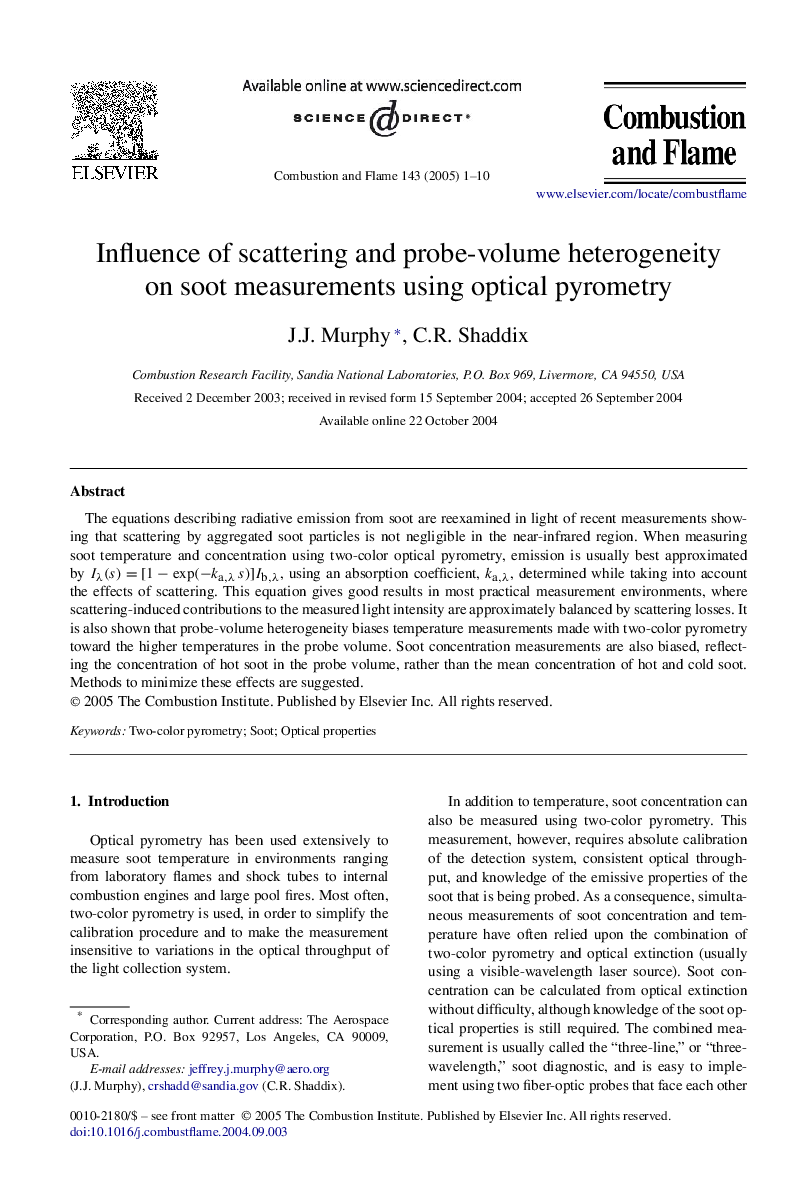| Article ID | Journal | Published Year | Pages | File Type |
|---|---|---|---|---|
| 9624489 | Combustion and Flame | 2005 | 10 Pages |
Abstract
The equations describing radiative emission from soot are reexamined in light of recent measurements showing that scattering by aggregated soot particles is not negligible in the near-infrared region. When measuring soot temperature and concentration using two-color optical pyrometry, emission is usually best approximated by Iλ(s)=[1âexp(âka,λs)]Ib,λ, using an absorption coefficient, ka,λ, determined while taking into account the effects of scattering. This equation gives good results in most practical measurement environments, where scattering-induced contributions to the measured light intensity are approximately balanced by scattering losses. It is also shown that probe-volume heterogeneity biases temperature measurements made with two-color pyrometry toward the higher temperatures in the probe volume. Soot concentration measurements are also biased, reflecting the concentration of hot soot in the probe volume, rather than the mean concentration of hot and cold soot. Methods to minimize these effects are suggested.
Related Topics
Physical Sciences and Engineering
Chemical Engineering
Chemical Engineering (General)
Authors
J.J. Murphy, C.R. Shaddix,
